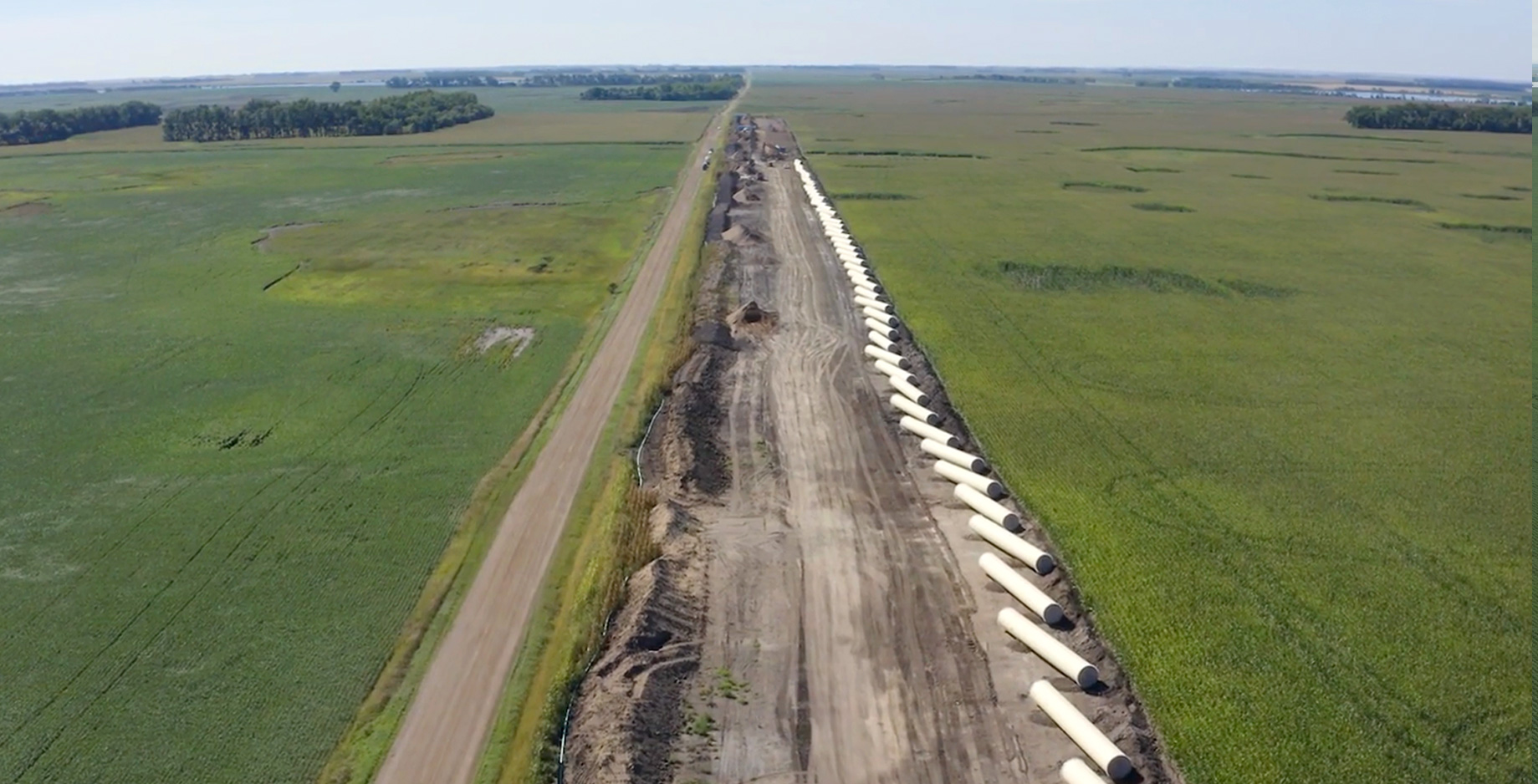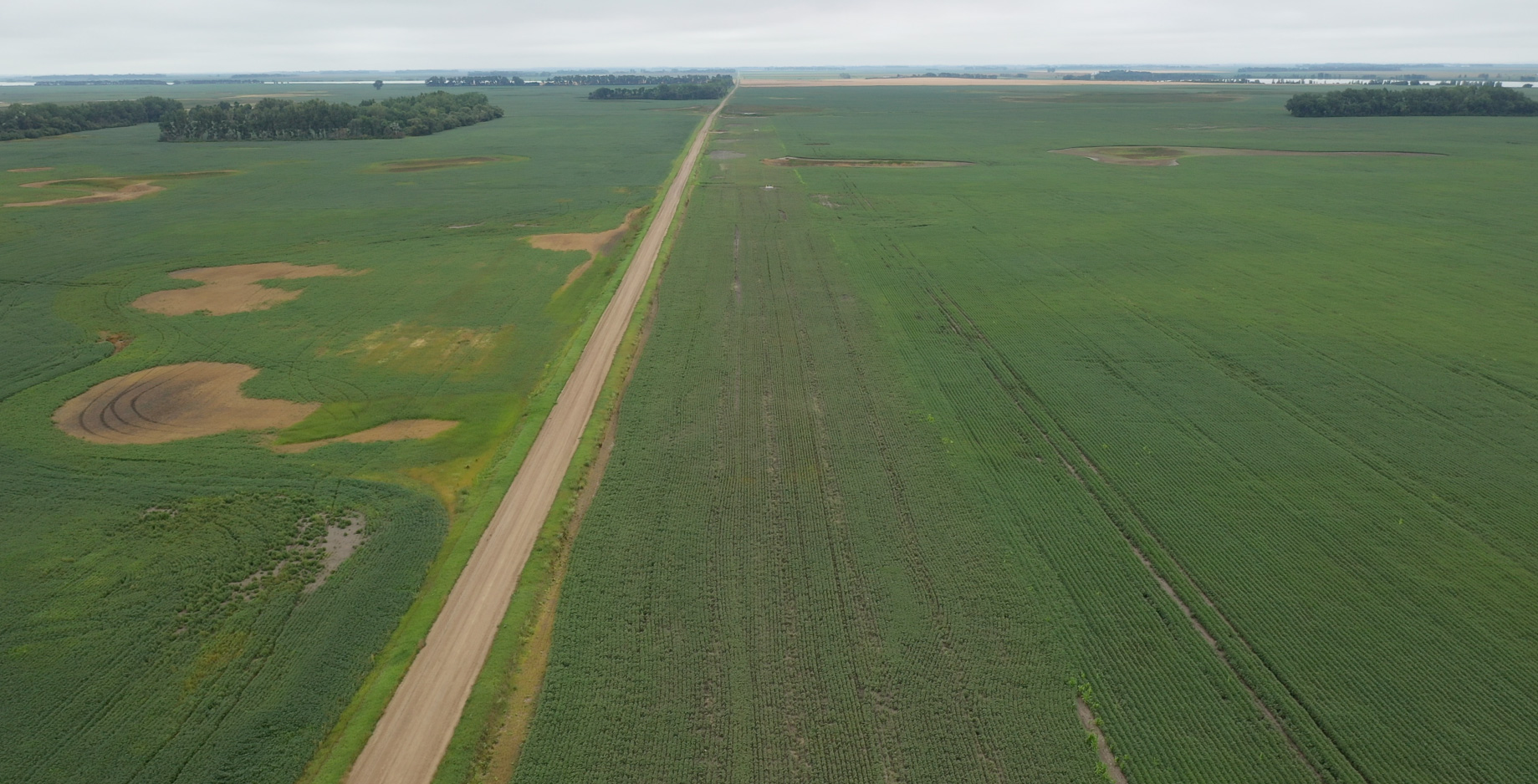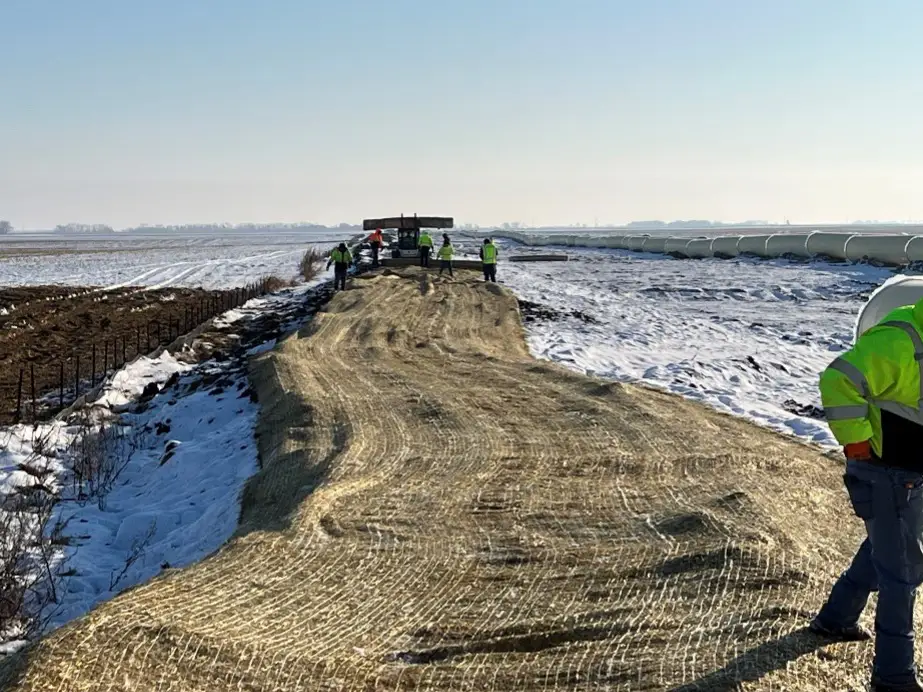Landowner Satisfaction the Goal of the RRVWSP Land Restoration Process
“Start to finish they were easy to get along with and did what they said they’d do,” says Tom Carr, Foster County landowner, about the Red River Valley Water Supply Project’s (RRRVWSP) construction and restoration process. Carr owns and rents land along the RRVWSP pipeline corridor.
“Landowner respect has been one of the guiding principles of the project since the very beginning,” says Scott Mehring, Garrison Diversion Conservancy District Field Services Supervisor for the RRVWSP. “Garrison Diversion places a high importance on landowner satisfaction. That’s why we developed a process to protect landowners’ property.”
Garrison Diversion begins working on easement discussions with landowners well in advance of construction. When it’s time to begin, the first step is to strip the precious topsoil and separate it so it can be returned to its proper place once the pipeline is installed. During the warmer months, soil tackifiers are applied to the piles to prevent erosion from wind and precipitation. Over the winter, straw mulch and mesh blankets provide additional protection.
When contractors begin digging a trench, subsoil is also separated and set aside. The third level of dirt is placed into a spoil pile. The earth that was put into the spoil pile is offered to landowners or hauled away if nobody wants it when construction wraps up.
“When the pipe is installed, contractors replace the subsoil and shatter it by driving over it four times with a bulldozer with a ripper attachment to loosen it and get rid of compaction,” explains Mehring. “Then they return the topsoil and disc it to break it up. The shatter and disc processes allow cover crops, and future crops, to root deeply. The process also facilitates good drainage into the subsoil.”
Weed control on the easements is provided by Garrison Diversion during construction. In addition, water trucks place chloride on every mile of haul roads – not just in front of homes – to reduce dust from contractors as a courtesy to landowners. The roads are also bladed every two weeks to maintain them, and gravel or rock is added as needed.
“When construction ended, they cleaned everything up, planted cover crop, and paid crop damages to me as agreed upon,” says Carr. Garrison Diversion’s crop damage policy allows landowners to submit claims for lost yield after land restoration, until the soil’s health returns. In the policy, Garrison Diversion agrees to pay demonstrated crop damage incurred as part of the construction, installation, repair, or maintenance of a water pipeline. The policy is in effect for the lifetime of the RRVWSP. Landowners or tenants may receive damages over the course of several years if they establish multi-year losses. The crop damage payment is intended to provide reimbursement for income that would have been received by the landowner or tenant if Garrison Diversion had not caused the damage, including prevented planting.
“With our crop damage policy, we want to make sure people are made whole if there’s a problem down the road,” says Mehring. “It is important to me and the rest of the Garrison Diversion staff that we get both things right. These are our neighbors and friends. We appreciate the trust they’ve placed in us to be good stewards of their land before, during, and after construction. Our goal is to return the property as close to its original state as possible.”
If you would like to learn more about the RRVWSP’s policies, visit the Landowners webpage at RRVWSP.com/landowners.
These photos show the same easement during construction and after restoration.


Drag the divider arrow left or right to see the pipeline during installation and after land restoration comparison photos.




